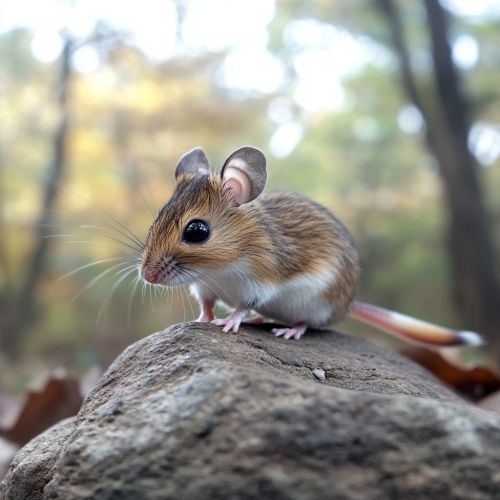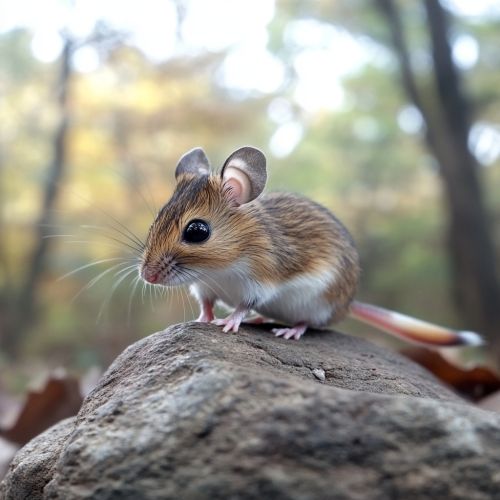Deer Mouse
Description
The Deer Mouse (Peromyscus maniculatus) is a small rodent native to North America. It is one of the most widespread and adaptable species within the genus Peromyscus. Known for its distinctive bicolored tail and agile movements, the deer mouse inhabits a variety of ecosystems ranging from forests and grasslands to deserts and alpine regions.


Taxonomy and Evolution
The deer mouse belongs to the family Cricetidae, which encompasses a diverse group of rodents including voles, lemmings, and hamsters. The genus Peromyscus is notable for its extensive speciation, with P. maniculatus being one of the most studied due to its wide distribution and ecological significance. The species exhibits considerable genetic variation, which has been a subject of interest in evolutionary biology.
Morphology
Deer mice are characterized by their small size, typically ranging from 7 to 10 cm in body length, with a tail that can be as long as the body or slightly longer. The tail is distinctly bicolored, with a darker dorsal side and a lighter ventral side. Their fur is generally soft and varies in color from gray to reddish-brown, depending on the subspecies and habitat. They possess large eyes and ears, adaptations that enhance their nocturnal lifestyle.
Habitat and Distribution
Deer mice are highly adaptable and can be found in a wide range of habitats across North America, from the Arctic tundra to the deserts of the southwestern United States. They prefer environments with ample cover such as forests, grasslands, and shrublands. Their ability to thrive in diverse habitats is attributed to their flexible diet and reproductive strategies.
Behavior
Deer mice are primarily nocturnal and exhibit a high degree of agility, often climbing trees and shrubs in search of food. They are omnivorous, feeding on seeds, fruits, insects, and small invertebrates. Their foraging behavior is influenced by seasonal availability of food resources. Deer mice are known to cache food, particularly seeds, which they store in burrows or other concealed locations.
Reproduction
The reproductive cycle of deer mice is closely linked to environmental conditions. Breeding typically occurs from spring to fall, with females capable of producing multiple litters per year. Gestation lasts approximately 23 days, and litters usually consist of 3 to 7 young. The young are altricial, being born blind and hairless, and are weaned after about 3 weeks. High reproductive rates and rapid maturation contribute to their success in various habitats.
Ecological Role
Deer mice play a significant role in their ecosystems as both prey and seed dispersers. They are a primary food source for a variety of predators, including owls, snakes, and carnivorous mammals. Their seed caching behavior aids in the dispersal and germination of plants, contributing to habitat regeneration and biodiversity.
Disease and Human Interaction
Deer mice are notable vectors for several zoonotic diseases, including Hantavirus, which can cause severe respiratory illness in humans. The transmission of hantavirus is primarily through inhalation of aerosolized particles from rodent droppings, urine, or saliva. As a result, deer mice are often subjects of public health studies and pest control measures.
Conservation Status
Despite their widespread distribution, deer mice face threats from habitat destruction and fragmentation. However, their adaptability and high reproductive rates generally buffer them against population declines. Conservation efforts focus on preserving natural habitats and mitigating the impacts of human activities.
